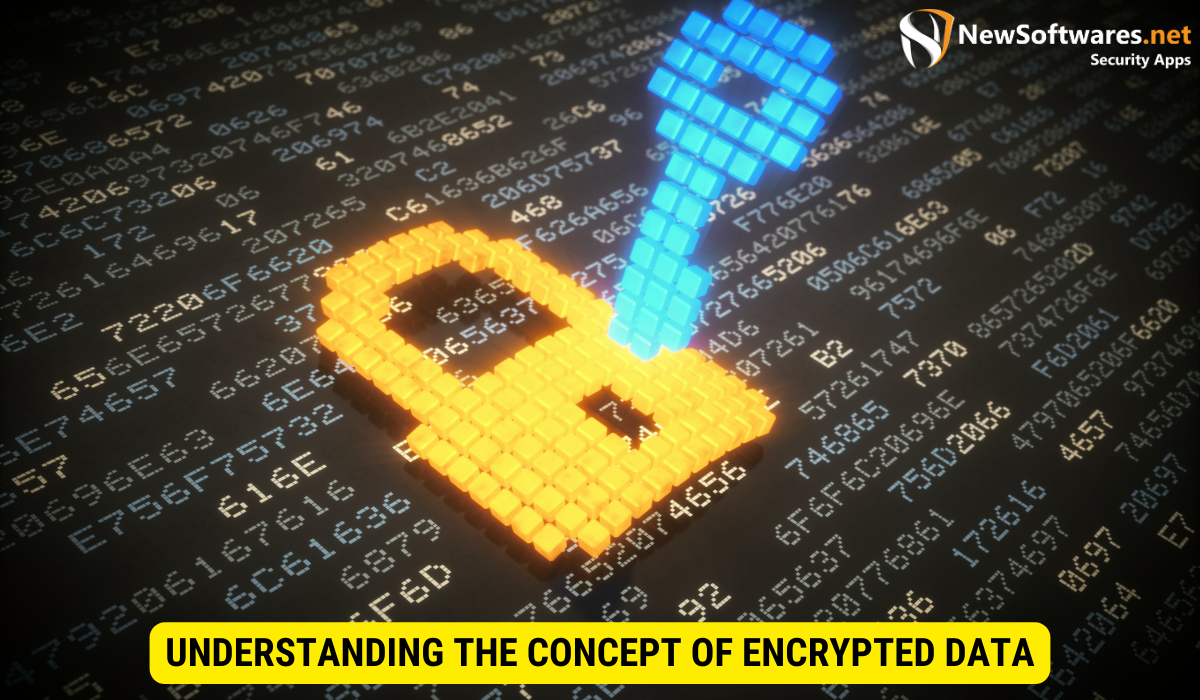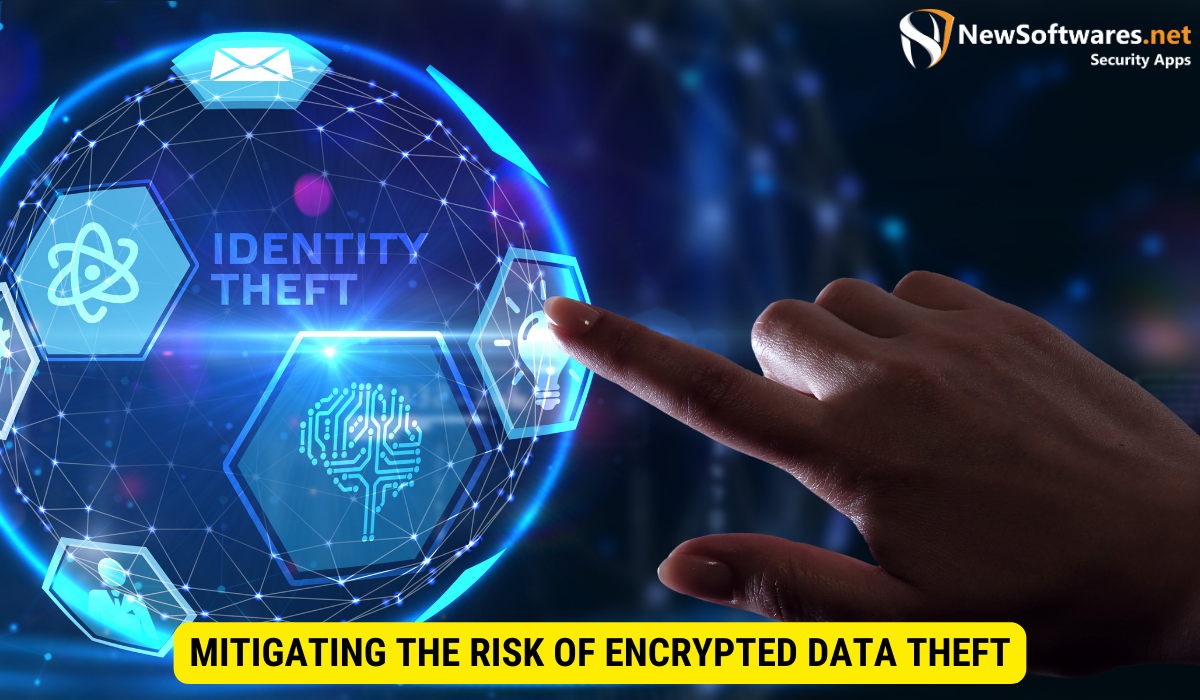In today’s digital age, the security of sensitive information has become a supreme concern for persons and organizations alike. One effective measure implemented to safeguard data is encryption. The process of encrypting data involves encoding it in such a way that only allowed individuals can access and understand it. However, despite the robustness of encryption systems, there are still those who attempt to steal encrypted data.
Together, we will delve into the motives behind stealing encrypted data and shed light on the reasons behind such actions.
Understanding the Concept of Encrypted Data

Before diving into the motives, let’s first gain a deeper understanding of what encrypted data entails. Encrypted data refers to information that has undergone the encryption process, rendering it unreadable to anyone without the proper decryption key. This technology has been widely adopted as a means to protect information from unauthorized access or tampering.
Encryption is a fascinating and complex field that has evolved over the years to meet the growing demands for secure communication and data protection. It has become an integral part of our digital lives, ensuring that our sensitive information remains confidential and secure.
One of the key reasons why encrypted data is so important is its ability to safeguard sensitive information. In today’s interconnected world, where data breaches and cyber attacks are on the rise, encryption acts as a protective layer that shields data from prying eyes. By encrypting data, organizations and individuals can ensure the secrecy and integrity of their valuable information.
The Importance of Data Encryption
Data encryption plays a vital role in defending sensitive information. By encrypting data, organizations and individuals can ensure the secrecy and integrity of their valuable data. It acts as a caring layer that shields data from prying eyes, making it significantly more difficult for illegal individuals to gain access to sensitive information.
Imagine a situation where a hacker manages to infiltrate a company’s database. Without encryption, the hacker would have easy access to all the sensitive information stored within the database. However, with encryption in place, the hacker would only see a jumble of meaningless characters, rendering the stolen data useless.
Encryption not only protects data from external threats but also safeguards against internal breaches. Employees with access to sensitive data may inadvertently or intentionally misuse it. However, if the data is encrypted, even if it gets into the wrong hands, it remains unreadable and unusable.
How Encryption Works?
The encryption process involves the use of complex algorithms to transform data into unreadable cipher text. This cipher text can only be deciphered using the appropriate encryption key. Encryption can be either symmetric, where the same key is used for encryption and decryption, or asymmetric, which employs separate keys for each process.
In symmetric encryption, the same key is used for both encryption and decryption. This key is shared between the sender and the recipient, ensuring that they can both encrypt and decrypt the data. This process is relatively fast & efficient, making it suitable for scenarios where speed is crucial.
On the other hand, asymmetric encryption, also acknowledged as public key encryption. It uses two separate keys – a free key and a secret key. The public key is used for encryption, while the secret key is kept secret and used for decryption. This method provides second layer of security as the private key remains with the intended recipient, ensuring that only they can decrypt the data.
Encryption algorithms are designed to be mathematically complex, making it extremely difficult for illegal individuals to reverse-engineer the encryption process and gain access to the original data. The power of an encryption algorithm lies in its ability to withstand various cryptographic attacks, ensuring that the encrypted data remains secure.
Overall, encryption is a powerful tool that plays a crucial role in protecting sensitive information. It provides individuals and organizations with the peace of mind that their data is secure, even in the face of sophisticated cyber threats. As technology continues to enhance, encryption will continue to progress, adapting to new challenges and ensuring the confidentiality and integrity of our digital world.
The Rise in Data Theft: A Global Concern
Data breaches and theft have become a global concern, inflicting severe damage on organizations and individuals. Let’s explore the impact of data breaches on businesses and the role of cybersecurity in mitigating these risks.
The Impact of Data Breaches on Businesses
Data breaches can have devastating penalty for businesses, leading to financial losses, reputational damage, and legal ramifications. When insightful data falls into the wrong hands, it can be sold on the black market or used for various malicious activities, including identity theft and financial fraud.
The Role of Cybersecurity in Preventing Data Theft
In today’s interconnected world, cybersecurity measures are crucial to prevent data theft. Organizations must invest in robust cybersecurity systems and practices to protect their encrypted data. This includes implementing firewalls, intrusion detection systems, and encryption solutions. Additionally, regular security audits and employee training are essential to maintain a high level of protection against data breaches.
The Motivations Behind Stealing Encrypted Data
Now that we have explored the impact of data breaches, let’s delve into the motivations driving individuals to steal encrypted data.
Financial Gain: The Primary Motive
One of the main motivators behind stealing encrypted data is the potential for financial gain. Encrypted data can hold valuable information such as credit card details, social security numbers, or financial records that can be used for fraudulent activities or sold on the black market.
Espionage and Competitive Advantage
In some cases, stealing encrypted data serves as a means of espionage and gaining a competitive advantage. Competitors may attempt to obtain sensitive information, such as research and development data or intellectual property, to gain insights into product strategies or secure an edge in the market.
The Thrill of the Challenge: Hackers’ Psychological Motives
For certain individuals, hacking into encrypted data is motivated by the thrill and challenge it presents. These individuals view breaking through security measures as a form of accomplishment, seeking validation within the hacker community. This psychological motive drives them to continually develop new techniques and exploit vulnerabilities.
The Methods Used to Steal Encrypted Data
Now that we understand the motivations behind stealing encrypted data, let’s explore the methods employed by cybercriminals to carry out their nefarious activities.
Phishing Attacks
Phishing attacks are a prevalent method used to trick individuals into revealing sensitive information, including encryption keys or login credentials. These attacks typically include the use of deceptive emails or websites that mimic legitimate entities, luring unsuspecting individuals into divulging their confidential data.
Malware and Ransomware
Malware and ransomware are malicious software programs that infiltrate systems, allowing hackers to gain unauthorized access to encrypted data. Once accessed, ransomware can encrypt important files and demand a ransom in exchange for their release.
Advanced Persistent Threats (APTs)
Advanced Persistent Threats are highly sophisticated and targeted attacks that aim to infiltrate organizations’ networks over extended periods. These attacks often involve social engineering techniques and exploit vulnerabilities in systems to gain access to encrypted data.
Mitigating the Risk of Encrypted Data Theft

To protect against the theft of encrypted data, organizations and individuals must adopt robust security measures and best practices.
Implementing Strong Security Measures
Implementing strong security measures, such as multi-factor authentication, encryption at rest, and strong encryption algorithms, can significantly reduce the risk of data theft. By adopting a covered approach to security, organizations can mitigate vulnerabilities and ensure the protection of their encrypted data.
Regularly Updating and Patching Systems
Regularly updating and patching software and systems is crucial to address known vulnerabilities that cybercriminals may exploit. Timely updates can prevent unauthorized access to encrypted data and ensure the security of sensitive information.
Employee Education and Awareness
Employees play a critical role in data protection. Ensuring employees are educated on best practices, such as recognizing phishing attempts, using strong passwords, and maintaining good cybersecurity hygiene, can help prevent unauthorized access to encrypted data.
Key Takeaways
- Data encryption is vital for protecting sensitive information from unauthorized access.
- Data breaches can lead to strict financial and reputational damage for businesses.
- Motivations for stealing encrypted data include financial gain, espionage, and the thrill of the challenge.
- Hackers employ various methods, such as phishing attacks and malware, to steal encrypted data.
- To mitigate the risk of data theft, implementing strong security measures, regularly updating systems, and educating employees is crucial.
FAQs
Why is data encryption important?
Data encryption is crucial as it ensures the confidentiality and integrity of sensitive information, protecting it from unauthorized access or tampering.
How can businesses prevent data theft?
Businesses can prevent data theft by implementing robust cybersecurity measures, regularly updating systems, and educating employees on best practices.
What motivates hackers to steal encrypted data?
Hackers are motivated by financial gain, espionage, and the psychological thrill of breaking through security measures.
What methods do cybercriminals use to steal encrypted data?
Cybercriminals use methods such as phishing attacks, malware, and advanced persistent threats to steal encrypted data.
How can individuals protect their encrypted data?
Individuals can protect their encrypted data by using strong encryption algorithms, regularly updating systems, and being vigilant against phishing attempts.
Conclusion
The motive behind stealing encrypted data can stem from financial gain, espionage, or the thrill of the challenge for hackers. Understanding these motivations is vital in developing effective strategies to protect against data breaches. By implementing strong security measures, regularly updating systems, and educating employees, individuals and organizations can mitigate the risks and safeguard their valuable encrypted data.
